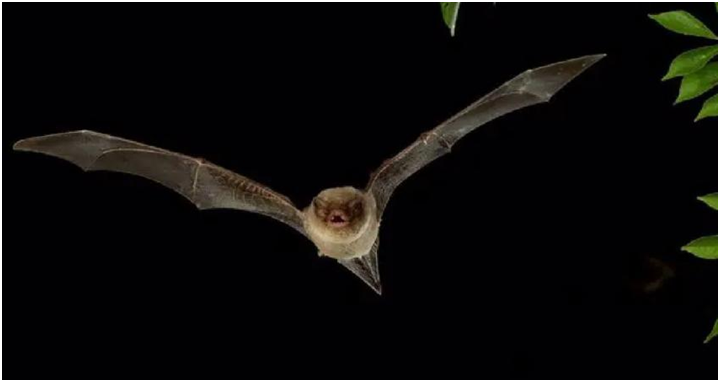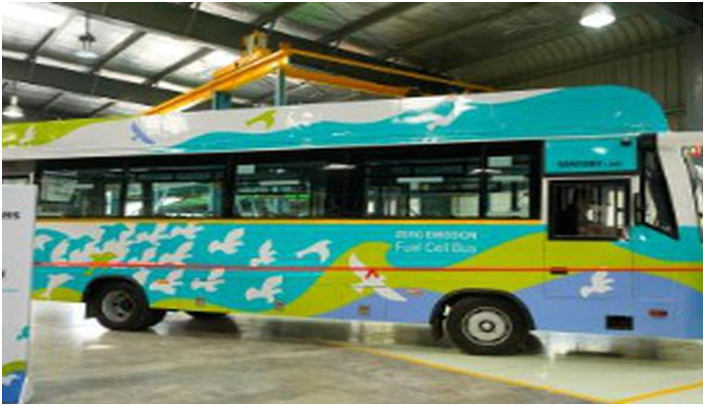Centres to be set up for people exposed to chemical, nuclear attacks (GS Paper 3, Science and Tech)

Why in news?
- In a first, the Union Health Ministry has drawn up a proposal to set up two tertiary level centres for the treatment of people exposed to chemical, biological, radiological and nuclear incidents or attacks.
Details:
- It is aimed at managing medical emergencies arising out of incidents such as the Bhopal gas tragedy, Visakhapatnam HPCL refinery blast, Tughlaqabad gas leak, Kanpur ammonia gas leak and other industrial accidents.
- The detailed project report for setting up of these two chemical, biological, radiological and nuclear (CBRN) facilities at Stanley Medical College in Chennai, Tamil Nadu and Jhajjar Campus, AIIMS has been readied.
Facilities:
- The two facilities are to be set up over one-and-half years at an estimated cost of Rs 230 crore.
- Each of them is expected to be a 50 bedded facility, including 16 ICU Beds, 20 isolation beds and 10 pre-and post-operation rooms. A bone marrow transplant centre with four beds will also be set up in these facilities.
- There will also be a decontamination shower facility comprising decontamination modules with hot, cold and chemical showers along with other necessary decontamination treatment and operation theatre.
- These facilities will also have ambulance services.
Way Forward:
- The rationale behind establishing such centres is to strengthen health centres in the civilian domain with facilities to handle CBRN cases.
- These facilities are planned to be established in already existing health facilities, around atomic power plant establishments and major metropolitan cities vulnerable to industrial accidents and terrorist actions.
Miniopterus phillipsi, a new long-fingered bat species discovered
(GS Paper 3, Environment)
Why in news?
Recently, an international team of researchers has found a new species of long-fingered bats in India and Sri Lanka, close on the heels of the discovery of a thick-thumbed bat species in Meghalaya.

Naming:
- They named the new species of long-fingered bats as Miniopterus phillipsi,.
- It was named after W WA Philips (1892-1981) in recognition of his contributions to studies on the mammals of Sri Lanka and South Asia.
Background:
- The specimens for this species were collected from Idulgashinna cave in Uva Province in Sri Lanka and are now deposited in the Natural History Museum of the neighbouring country.
- The initial research was carried out in Sri Lanka in 2019 and it took three years to be completed in both Sri Lanka and India.
Habitat in India:
- The researchers found that the population of long-fingered bats in Robber's cave in Mahabaleshwar in the Western Ghats of India also belongs to this species, which was earlier mistaken as Eastern bent-winged bats.
- The long-fingered bats belonging to the family Miniopteridae are part of a large group comprising at least 40 species worldwide.
- They have similar morphology and overlapping dimensions rendering species identification problematic.
- The Long-fingered bats are obligatory cave and tunnel dwellers living in large colonies and this new species is also no exception.
Way Forward:
- A team of scientists had recently discovered a new species of thick-thumbed bat from a bamboo forest in Meghalaya and named it after the state.
- While in Sri Lanka it is relatively widespread, more studies are needed to determine its exact distribution range in India.
Arunachal's Wancho community to digitise ancient folktales
(GS Paper 1, Culture)
Why in news?
- With the assistance of a UK-based researcher, the elders of the Wancho community in a remote part of Arunachal Pradesh have taken on the challenge of digitising their age-old folktales.

Details:
- The researcher, Tara Douglas, spent more than three years in this little-known area of the Patkai hills even throughout the COVID-19 pandemic documenting the folklore, to digitally archive the tales.
Wancho tribe:
- Arunachal Pradesh with recorded 26 major tribes, 110 sub-tribes, and many unrecorded sub-tribes is a research hub for anthropologists.
- The Wancho tribe, with a population of nearly 57,000 members, inhabits mostly the Longding district that borders Myanmar.
Culture & tradition:
- The Wanchos have a rich tradition of oral stories, memories, and songs.
- The knowledge of the ancestors that has accumulated over generations is a record of life as it has been lived for centuries over here.
- It is the history of the cultural practices and rituals, the precise knowledge of livelihood practices, of plants, animals, the climate and geography. It is the collective memories of the community.
Preservation effort:
- The pattern of life is changing rapidly as the district becomes more integrated and accessible to the outside world.
- Before the demise of the tradition bearers of the village and the disappearance of the knowledge that they hold, the elders are recording their memories.
PARADISEC:
- The Wancho folk tales are stored in the Pacific and Regional Archive for Digital Sources in Endangered Cultures (PARADISEC), a digital record of some of the small cultures and languages of the world.
- PARADISEC is a consortium of three universities - the University of Sydney, the University of Melbourne, and the Australian National University.
Way Forward:
- The objective of the project is to record, document, and translate a collection of the oral narratives from two indigenous communities of North East India - the Wancho in Arunachal Pradesh and the Tangkhul in Manipur, and then to work with members of the community to adapt one selected story from each group into a short animated film.
First hospital in India to introduce brain mapping technology
(GS Paper 3, Science and Tech)
Why in news?
In a first of its kind technology, with combination of decades of research with cutting edge technology, IBS Hospital launched the first brain mapping device connectomics/ Quicktome in the country.

What is Quicktome?
- Quicktome uses sophisticated algorithms to analyze millions of data points and build a brain map personalised for each patient — from a standard, non-invasive MRI scan.
- The maps, which doctors can view on their computers, offer a level of anatomical detail typically not available in a clinical setting, allowing surgeons to incorporate advanced brain network data into neurosurgical planning.
- For instance, a mental illness need not necessarily be a nebulous ailment which ought to be diagnosed through patient history and interview, but these brain network biomarkers can accurately highlight the regions of an anomaly and instantly provide quantitative data to assist in decision making for further course of treatment.
Significance:
- With the advent of such personalised brain mapping, treatment for brain tumor and other brain surgeries have become much safer and due to the accuracy, damage to important brain areas can be avoided.
- This is one such breakthrough in preoperative imaging in the field of medical science, which can offer cutting edge algorithms and cloud computing. This new technology has the potential to transform precision neurosurgery into a practical one.
India’s first indigenously developed Hydrogen Fuel Cell Bus
(GS Paper 3, Science and Tech)
Why in news?
- Recently, Ministry of Science & Technology launched India’s first truly indigenously developed Hydrogen Fuel Cell Bus developed by KPIT-CSIR in Pune.
- Green hydrogen is an excellent clean energy vector that enables deep decarbonization of difficult-to-abate emissions from the refining industry, fertiliser industry, steel industry, cement industry and also from the heavy commercial transportation sector.

How it works?
- The fuel cell utilizes Hydrogen and Air to generate electricity to power the bus and the only effluent from the bus is water, therefore making it possibly the most environmentally friendly mode of transportation.
- For comparison, a single diesel bus plying on long distance routes typically emits 100 tons of CO2 annually and there are over a million such buses in India.
- The high efficiency of fuel cell vehicles and the high energy density of hydrogen ensures that the operational costs in rupees per kilometre for fuel cell trucks and buses are lower than diesel powered vehicles and this can bring freight revolution in India.
Eliminating the on-road emissions:
- About 12-14% CO2 emissions and particulate emissions come from diesel powered heavy commercial vehicles and these are decentralised emissions and hence difficult to capture.
- Hydrogen fuelled vehicles provide an excellent means to eliminate the on-road emissions from this sector. India is also aiming to increase inland waterways for freight and passenger transport.
- By achieving these goals, India can pole-vault from being net importer of fossil energy to becoming net exporter of clean hydrogen energy and thus, providing global leadership to India in hydrogen space by becoming a large green hydrogen producer and supplier of equipment for green hydrogen.
Bisphenol-A pilot plant inaugurated:
- The Bisphenol-A pilot plant in CSIR-NCL was inaugurated and these pilot plants have successfully demonstrated novel process technologies developed by NCL under CSIR’s Covid-19 mission program and Bulk Chemicals mission program.
- Bisphenol-A (BPA) is an important feedstock for the production of epoxy resins, polycarbonate and other engineering plastics.
- The global market for Bisphenol-A is projected to reach 7.1 Million Tons by 2027, growing at a CAGR of 2% over the analysis period 2020-2027. The entire estimated annual demand of 1, 35,000 tons in India is imported today.
- The CSIR-NCL’s technology will enable import substitution of this important raw material and help in India’s Atmanirbhar initiative.






